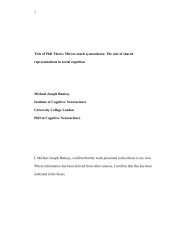Vyacheslav Ivanov and C.M. Bowra: a ... - UCL Discovery
Vyacheslav Ivanov and C.M. Bowra: a ... - UCL Discovery
Vyacheslav Ivanov and C.M. Bowra: a ... - UCL Discovery
Create successful ePaper yourself
Turn your PDF publications into a flip-book with our unique Google optimized e-Paper software.
The publication of these letters in Petersburg in 1921 <strong>and</strong> in Moscow <strong>and</strong> Berlin<br />
in 1922 under the title Perepiska iz dvukh uglov (A Correspondence from Two Corners)<br />
preserved the spontaneity <strong>and</strong> authenticity of the original exchange while extending it<br />
into the public domain (a similar effect was achieved by Gogol’ when he published his<br />
Selected Passages from Correspondence with Friends). Like the earlier essay ‘Kruchi’,<br />
the correspondence set up the parameters of the debate in a lively, provocative manner<br />
without offering any single solution to the many questions it raised. This open-ended<br />
quality was undoubtedly part of the reason for its huge appeal <strong>and</strong> influence in post-war<br />
Europe. In 1926 the letters were published in a German translation in Martin Buber’s<br />
journal Die Kreatur, followed by book versions in 1946 <strong>and</strong> 1948. In 1930 a French<br />
translation by Hélène Iswolsky <strong>and</strong> Charles Du Bos appeared in Vigile, accompanied by<br />
<strong>Ivanov</strong>’s letter to Charles Du Bos, reproduced in a book edition of 1931 with an<br />
introduction by Gabriel Marcel. 1932 saw the publication of an Italian translation,<br />
revised by <strong>Ivanov</strong> <strong>and</strong> introduced by Ol’ga Deschartes (the pseudonym of his<br />
companion Ol’ga Shor). Translations into Spanish (1933), Hebrew (1943), Dutch<br />
(1945), <strong>and</strong> English (1947, 1948, <strong>and</strong> 1966) followed in rapid succession. 26<br />
It is interesting to note that the English translation of 1966 appeared in an<br />
anthology introduced by Isaiah Berlin, who accompanied <strong>Bowra</strong> on his first visit to<br />
<strong>Ivanov</strong> in Rome in 1947, as we shall see in Chapter 4. In his comments on the<br />
correspondence (described as ‘the swan song of the old intelligentsia’) he characterised<br />
<strong>Ivanov</strong> as ‘a greatly gifted, civilized, <strong>and</strong> influential symbolist poet, […] who speaks as<br />
a “Hellene” <strong>and</strong> an heir of Byzantium’, <strong>and</strong> emphasised his search for ‘a synthesis of<br />
26 For details see Pamela Davidson, Viacheslav <strong>Ivanov</strong>: A Reference Guide (New York: G.K Hall, 1996),<br />
xxxviii-xlii.<br />
25
















